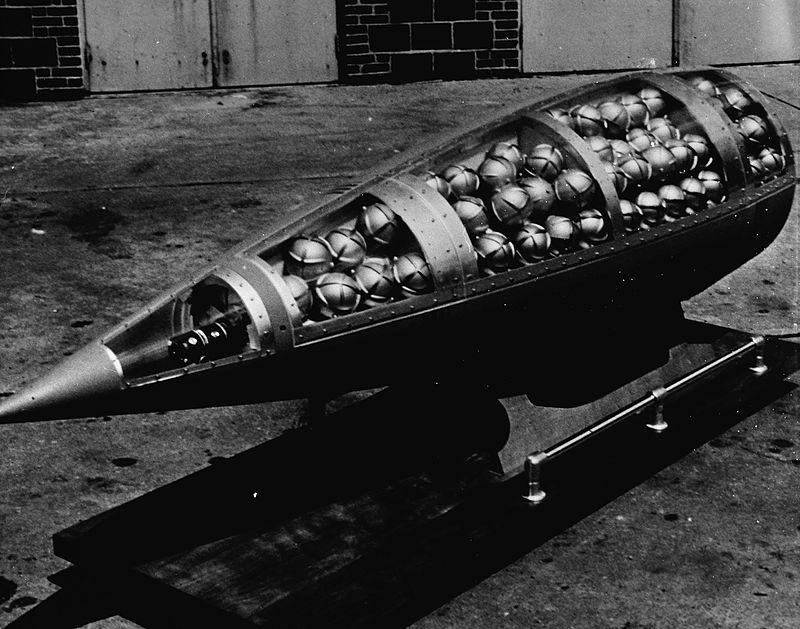I
The Biden administration approved the transfer of cluster munitions to Ukraine on Friday, sparking concern from human rights groups and some congressional lawmakers over the weapon’s ability to harm civilians and children long after the bombs have fallen.
Cluster munitions are dropped by aircraft or fired by a ground-based weapons system over a target area, spreading out a few dozen to hundreds of submunitions. The weapons are valued militarily because they can strike multiple targets.
But the weapons are banned by more than 100 countries because the submunitions spread out imprecisely, often fail to detonate and remain as explosive hazards for decades.
Washington’s green light to deliver the cluster munitions to Kyiv comes as Ukrainian forces are expending high rates of ammunition and are making slow progress in the counteroffensive that began last month.
Under Secretary of Defense for Policy Colin Kahl said the U.S. bomblets would “keep Ukraine in the fight” as they work through dug-in Russian defenses, which he described as “hard sledding.”
“The worst thing for civilians in Ukraine is to lose the war,” Kahl said. “We want to make sure that the Ukrainians have sufficient artillery to keep them in the fight in the context of the current counteroffensive, and because things are going a little slower than some had hoped.”
Kahl argued the U.S.-provided munitions have a much lower dud or failure rate while the Pentagon was working with Ukraine to minimize damage to civilians from the munitions, including winning assurances from Kyiv to provide accurate assessments on where they are used. He said the munitions were a temporary “bridge” as defense production ramps up to produce more regular artillery shells.
At least 38 human rights organizations have publicly opposed the transfer of cluster munitions to Ukraine, where the weapons have already been used in the war to devastating effect.
“These are already all over the country and will need to be cleaned up. That is not a good enough excuse for the United States to be sending more,” said Sarah Yager, the Washington director at Human Rights Watch (HRW). “Legislators, policymakers and the Biden administration will probably think twice when the pictures start coming back of children who have been harmed by American-made cluster munitions.”
Kyiv has long requested the cluster munitions. Ukrainian officials have asked for nearly every advanced weapon system from western allies.
After the U.S. decision leaked, Ukrainian presidential office adviser Mykhailo Podolyak said “the number of weapons matters” in the “great bloody war” with Russia.
“So, weapons, more weapons, and more weapons, including cluster munitions,” Podolyak tweeted on Friday.
Eighteen members of the Western security alliance NATO have banned cluster munitions and are unlikely to approve of the decision to transfer them to Ukraine.
Germany’s Foreign Minister Annalena Baerbock said Friday that Berlin stands by a major treaty banning the use of the weapons, according to several news reports.
NATO Secretary-General Jens Stoltenberg declined to comment on the U.S. decision but said at a Friday news conference that individual members were free to make their own choices regarding the weapons.
Pentagon press secretary Brig. Gen. Pat Ryder said “unity continues to remain very strong” across the alliance during a Thursday briefing.
The cluster munitions headed to Ukraine include those for a 155 millimeter Howitzer artillery gun, part of a broader package for Kyiv announced Friday.
Concerns for accuracy
Congress passed a law in 2009 that says the U.S. cannot deploy or transfer cluster munitions with a dud rate higher than 1 percent. The president can sign a waiver to bypass that restriction. Existing laws also prohibit the use of the weapons in civilian areas.
Ryder on Thursday said they have “multiple variants” of cluster munitions and Washington would not deliver those with a rate higher than 2.35 percent. He said they would select the lowest rate possible. Kahl confirmed the same figure on Friday.
But human rights groups have said the Pentagon has not been transparent with the data on dud rates and are calling for more clarity. There is also concern about accuracy and that some bombs, including the 155 mm weapons, have a much higher failure rate than reported.
Both Russia and Ukraine have allegedly used cluster munitions in the war so far, which human rights organizations say has led to civilian deaths.
Russia’s dud rate is reportedly as high as 40 percent, while Ukraine’s is as high as 20 percent, according to Yager from HRW. Yager also said the bombs already deployed constitute a $73 billion cleanup effort.
The Pentagon maintains the cluster munitions could help Ukraine advance and stop the Russian bombings. But Eric Eikenberry, the government relations director at Win Without War, countered the argument as “speculative.”
“We’ve already seen this in conflict,” Eikenberry said, dismissing “the idea that these are going to be a huge boon, the counteroffensive is going to jet forward and we’re going to save lives in the aggregate because these are going to be the wonder weapons that flip the battlefield in our favor and takes Russian artillery out of commission.”
Courtesy: The Hill







